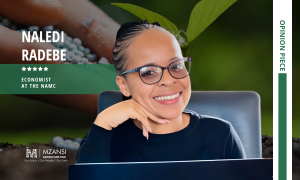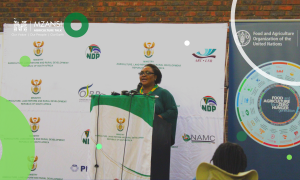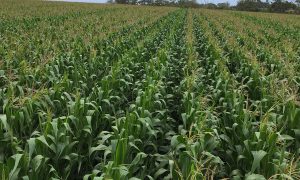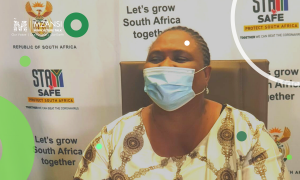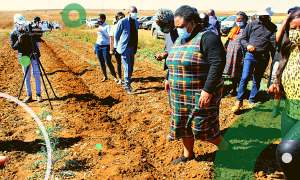October 16 was World Food Day, a day to raise awareness on issues of food security worldwide. In South Africa, this day was preceded, a week earlier, by the launch of the National Food and Nutrition Security Survey.
This survey revealed that more than 60% of households experienced food insecurity, with over 17% experiencing severe food insecurity in the period 2021 to 2023. These two events brought to fore one of the priorities of the leading political party in the Government of National Unity (GNU), which is tackling the cost of living.
Currently, there are discussions, not for the first time, around expanding the list of Vat-zero rated food items to include poultry meat, among others. Owing to South Africa’s sophisticated and advanced agricultural ecosystem, the country is the top ranked country in Sub-Saharan Africa in the Global Food Security Index (The Economist). If 60% of the South African households experienced varying degrees of food insecurity, how worse can it be in the rest of the sub-continent?
Food security is defined by four elements: 1) Availability measures agricultural production and on-farm capabilities, the risk of supply disruption, national capacity to disseminate food and research efforts to expand agricultural output; 2) Affordability measures the ability of consumers to purchase food, their vulnerability to price shocks and the presence of programmes and policies to support consumers when shocks occur; 3) Nutrition measures the variety and nutritional quality of average diets, as well as the safety of food; and 4) Sustainability and adaption assesses a country’s exposure to the impacts of climate change; its susceptibility to natural resource risks; and how the country is adapting to these risks.
Based on the above, South Africa is vulnerable in two areas: affordability and sustainability and adaptation. The latter is mainly because agriculture, by its very nature, is nature dependent and will remain so as effects of climate change are felt throughout the globe. Affordability is a function of food prices in the sea of unemployment.
There are several ways to improve security, particularly as it relates to the two areas of vulnerability mentioned above. From the onset, it should be noted that food security, like public health, is a public good that falls squarely within the ambit of the government. Free markets by themselves are exclusionary and thus cannot be conduits to delivery food security for all. What follows therefore are the options available to the government to achieve food sovereignty and ultimately, improved food security.
The first option is already in public domain and that is expanding the list of basic foodstuffs that are Vat-zero rate, from the current 19 food items. There is an unfounded fear that expanding the list will deprive the government of the much Vat-revenue to fund government spending programmes, including social grants.
South Africa is a currency issuer that is not dependent on taxes to fund government spending. Government spending programmes are funded through Acts of parliament in collaboration with the National Treasury and the South African Reserve Bank.
Secondly, full implementation of the agriculture and agro-processing master plans (AAMP), the poultry and sugar master plans, among others, will enhance food sovereignty and food security at the same time.
Third, the government through its agency, Competition Commission, can be extra vigilant on issues within its mandate. The South African agricultural landscape is consolidating into few agribusinesses and large family farms. For instance, Senwes acquired Suidwes while GWK that already owns TWK merged with VKB. This pattern of consolidation and increasing dominance is like developments that led to the dominance of the global food system by the four agro-giants, collectively called the ABCD agro-giants (i.e. Archer Daniels, Bunge, Cargills, and Louis Dreyfuss). These agro-giants are said to control 90% of the global grain trade, plus considerable parts of the food processing chain. This is not good for global consumers.
Fourth and the least of our favourite options, the government interfere in the market through trade policies to limit exports. South Africa is a net exporter of food, which means that the sector is feeding South Africans plus a significant portion of the world population. Curbing exports, as India did with basmati rice, closes exports, making more available in the domestic market and leading to artificial low prices. This trade policy option addresses food security by focusing only on one side of the food value chain, consumers, while neglecting the impact of the same policy on the goose that laid the golden eggs, producers.
Last and our recommendation, government, again through one of its agencies, enter the free market as one of the buyers, but to build up buffer stocks of select soft commodities, say maize and wheat. The ideal agency would be the National Agricultural Marketing Council. The argument for wheat is simple. South Africa only produces 50% of its domestic needs, needing to import the balance each year. But the government does not have to build up buffer stocks of the whole 50 per cent but a significant portion for release in times of significant disturbances in the global markets as was the case following the onset of the war in Ukraine.
Although South Africa is self-sufficient on maize, prices are highly volatile, reflecting both production and marketing information at any given point in time. Maize, originally knowns as Zea Mays, is thought to have originated in Mexico but through its versatility, the grass is now grown all over the world and is a staple food in many countries, including South Africa. The United States is the world’s largest exporter with Mexico, oddly enough, the world’s largest importer.
Domestically, maize is a highly traded soft commodity on the South African Futures Exchange (SAFEX). Under normal growing conditions, maize normally trades between import and export parity prices (see figure 1). During times of drought, say 2015/16, SAFEX prices will edge closer to or be at import parity levels, signaling tightness in market supply. During La Nina seasons, SAFEX prices edge close the floor prices or export parity levels. On odd occasions, SAFEX prices will briefly trade out of bounds, but arbitrage activities of traders will quickly drive prices back to within bounds.

Source: Grain SA
Generally, markets are information networks, absorbing data from the environment, making decisions and releasing data back, showing up in prices. In an environment where the ecological crises are intensifying and global tension escalating, can we afford to leave the food security to the invisible hands of free markets? Free markets are themselves weak self-correcting mechanisms that sometimes results in historical calamities like the global food price crisis of 2007/08 and therefore cannot be relied upon by governments to bring about food security for all.
Let us demonstrate how this last option would work. The total market supply of white maize from the 2023/24 season together with the carry-over stock is projected at 7,3 million tons (see table 1). South Africans consumes 5.1 million tons but with exports at 1.8 million tons, the resulting carry-out stock of 320,000 tons is only 50% of the pipeline requirements.
In other words, because of 1.8 million tons of exports, the country must now import 320 000 tons to meet pipeline requirements. As a result of this tightness in domestic market supply vis-à-vis pipeline requirements, SAFEX price is edging closer to import parity level on figure 1 above. Since the beginning of the year, white maize price is up more than 40 per cent. Price volatility and the current elevation affect maize millers, their margins and ultimately retail prices of maize meal and samp. As we read of the 60 per cent households that are food insecure, we should know that it is not because of production deficit, though partly so, but more because of policies steeped on free markets.
Table 1: Supply and demand for white maize

Source: Grain SA
With the government, through its agency, entering the market to buy maize for storage, a significant of the 1,8 million tons of export would constitute buffer stocks, available for release back onto the local market when needed. Through the transparent silo system, the market will know of the existence of this buffer stock, driving SAFEX price down to within the import and export parity levels. Continued existence of buffer stocks will not only ensure security of supply but will also acts as a price stabilizer. Millers would benefit from stable margins while consumers would benefit from affordable prices of maize meal and samp. The same argument holds true for wheat and prices of bread. Ultimately, food security improves through policy focus on food sovereignty.
In conclusion food security is a public good requiring intentionality by the government. Policy measures aimed at food sovereignty have potential to enhance food security. Although loadshedding is increasingly becoming a distant memory, the trauma of loadshedding remains and the same can happen, as it has happened in 2007/08, if food security continue being left in the invisible hands of free markets. The whole point of writing this article is that by making informed policy decisions, we can prevent the worst food security outcomes in these rapidly changing geopolitical and disaster-prone ecological environments. The future does not have to be the same as the present or the past, for the present is not the same as the past.
Disclaimer: The views expressed in this article is solely that of Independent Agricultural Economists Andisa Mpembe Robert Matsila, and does not necessarily reflect the views of Mzansi Agriculture Talk, their employers, or other associated parties.



